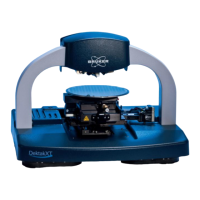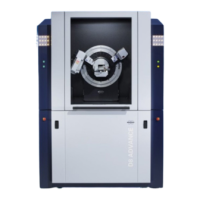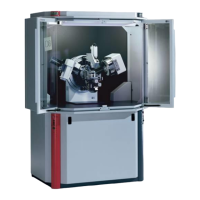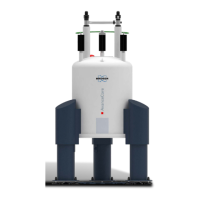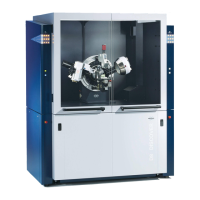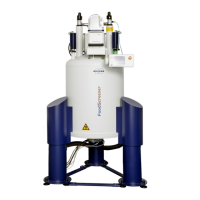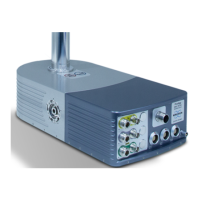D2 PHASER User Manual
DOC-M88-EXX141 V5 – 01.2015 3
Basics and principle of operation
The operation mode, which is described here in principle, is called the focussing Bragg Brentano
geometry. Radiation from the X-ray tube (e) (fig. 9 and 10) is emitted from the focus (f) and hits the
sample in the goniometer centre (a). The incident beam direction is (b). The primary beam hits the
sample and is diffracted by the crystal lattice of the powder sample.
The diffraction peaks result from the interference of x-ray waves by the periodic 3d-lattice of the
sample, i.e. of all powder microcrystals, which are in diffraction condition. Each powder microcrystal
contributes to a discrete diffraction peak on the diffraction cones. Their peak intensity is a result of the
atomic types and their positions in the unit cell. The diffraction peaks are generated at specific angles
which are directly correlated with the lattice symmetry (14 Bravais lattice symmetries).
The diffracted radiation is detected by an X-ray sensitive detector (k). Angular positions and intensities
of the diffracted radiation peaks are characteristic for the sample’s crystal structure. Additional
qualitative and quantitative information on crystal properties can be found by analyzing diffraction
patterns, for example chemical composition and physical properties such as crystallinity.
The powder sample rotates with a constant angular velocity around axis (j) (fig. 11 for a standard
sample rotation or fig. 146 for a sample changer) in order to bring more crystallites in the X-ray beam
and therefore improves statistics. The axis (j) of this sample rotation is perpendicular to the goniometer
axis (and to the sample surface) and bisects the incident and diffracted beam. Sample rotation can be
switched on or off if required.
During the measurement of the characteristic diffraction pattern of a polycrystalline sample, detector
and tube rotate (fig. 9 and 10) around the goniometer centre (a) each with angle to the sample
surface (--geometry). The tube focus (f), the goniometer centre (a) and the detector aperture (l)
define a circle ((d) in fig. 9 and fig. 10), the measurement circle, with the goniometer centre as the
circle’s centre.
Another circle is defined by tube focus (f), goniometer centre (a) and detector aperture (l) which lie on
the circumference of the focusing circle ((m) in fig. 9 & 10). The surface of the sample contacts this
circle tangentially. The circle is called focusing circle because all X-rays which leave the tube focus
(point) within a certain divergence angle area are concentrated (focused) again to a point in the centre
of the detector slit. If a 1D-detector is used, X-rays which are not in --condition do not fulfil the
focussing condition perfectly ((m) in fig. 9).
The diameter of the focusing circle changes with --rotation, the diameter of the measurement circle
remains constant. For optimal focusing, the sample should be a segment of the focusing circle. In
practice the sample surface is flat and hence an approximation to this ideal case. The approximation
becomes better when the focusing circle becomes larger in diameter (at smaller diffraction angles 2).
In this case the focusing condition is better fulfilled.
For smaller focusing circles there are deviations from the ideal focusing condition which can be seen
in measured peak profiles and shifts of the peak position (known as flat specimen errors). The
diffraction angle 2 is the angle between the primary beam direction (b) and the diffracted beam
direction. The beam paths and conditions are shown in figures (9) and (10).
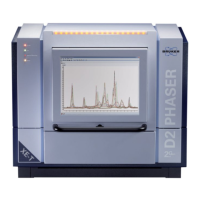
